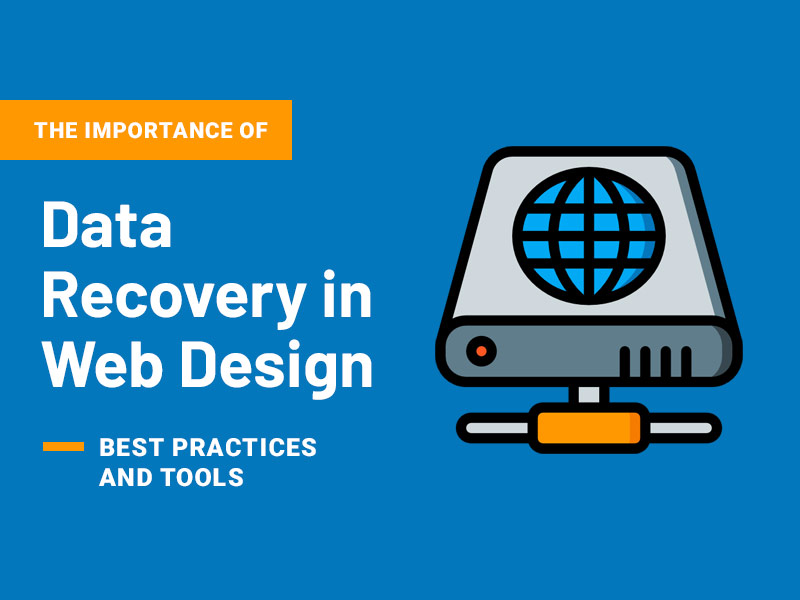Web design is a creative field that requires a lot of effort and dedication. Designers work for hours on end to create stunning websites that attract and retain visitors. However, despite their best efforts, data loss is a common problem in web design. Losing important design documents and files can be devastating, especially when deadlines are tight. In this blog post, we will discuss the importance of data recovery in web design and provide best practices and tools to help prevent and recover lost data.
Introduction to Data Recovery in Web Design
Data recovery is the process of retrieving lost, corrupted or damaged data from your computer or storage medium. In web design, data recovery is critical since designers work with large files and complex software applications that are prone to crashes and data loss. Losing important data can set back a project and cause serious delays. Therefore, designers need to have a data recovery plan in place to minimize the impact of data loss.
Importance of Data Recovery in Web Design
Data recovery is important in web design because it helps to minimize downtime and reduce the risk of losing important files. With a data recovery plan in place, designers can quickly recover lost data, minimize the impact of data loss, and meet project deadlines. Additionally, data recovery helps to prevent data loss caused by hardware failures, software crashes, and human error. By regularly backing up data and using data recovery tools, designers can ensure that their work is always safe and secure.
Common Causes of Data Loss in Web Design
There are several common causes of data loss in web design. These include hardware failure, software crashes, and accidental deletion. Hardware failure can occur when the hard drive crashes, or the computer is damaged by water or fire. Software crashes can occur when the software application freezes, or there is a power outage. Accidental deletion can occur when the designer deletes a file by mistake or overwrites a file. These are just a few examples of the many causes of data loss in web design.
Best Practices for Data Recovery in Web Design
There are several best practices that designers can follow to prevent and recover from data loss. These include:
Regular Backups
One of the best ways to prevent data loss is to regularly back up your work. Designers should create a backup schedule that suits their workflow and ensure that all their work is backed up to an external hard drive (such as datenrettung festplatte) or cloud storage.
Version Control
Version control is a system that helps designers keep track of changes made to a file. By using version control software, designers can revert to previous versions of a file if necessary.
Save Often
Saving often is a simple but effective way to prevent data loss. Designers should save their work regularly and use the autosave feature in software applications to prevent data loss.
Use Reliable Software
Using reliable software is critical in preventing data loss. Designers should use licensed software that is regularly updated and has a good track record of data recovery.
Tools for Data Recovery in Web Design
There are several tools that designers can use to recover lost data in web design. Some of these tools include:
Understanding Photoshop Autosave Location
Photoshop has an autosave feature that automatically saves files at regular intervals. Designers can find the photoshop autosave location by going to the preferences menu and selecting File Handling. This feature can help to recover lost Photoshop files.
Steps to Recover an Illustrator File
Illustrator files can be recovered using the “Recover” option in the file menu. If this does not work, designers can use third-party Illustrator file recovery software to recover lost Illustrator files.
Other Data Recovery Software for Web Design
There are several data recovery software applications that designers can use to recover lost data. Some of these include EaseUS, Stellar Data Recovery, and Recuva.
Preventing Data Loss in Web Design
Preventing data loss in web design is critical to ensure that your work is safe and secure. Designers should follow best practices such as regular backups, version control, saving often, and using reliable software. Additionally, designers can use data recovery tools such as Photoshop’s autosave feature or data recovery software to recover lost data.
Conclusion
Data recovery is critical in web design to prevent data loss, minimize downtime, and meet project deadlines. By following best practices such as regular backups, version control, saving often, and using reliable software, designers can prevent data loss and ensure that their work is always safe and secure. Additionally, designers can use data recovery tools such as Photoshop’s autosave feature or data recovery software to recover lost data. By having a data recovery plan in place, designers can ensure that they are always prepared for the worst.







